Westland PV-6 Wallace
Westland PV-6 Wallace
Yeovil's record-breaking all-purpose Military aircraft
The Westland Wallace was a British two-seat, general-purpose biplane of the Royal Air Force, developed by Westland as a follow-on to their successful Wapiti. As the last of the interwar general purpose biplanes, it was used by a number of frontline and Auxiliary Air Force Squadrons. Although the pace of aeronautical development caused its rapid replacement in frontline service, its useful life was extended into the Second World War with many being converted into target tugs and wireless trainers. In 1933 a Westland Wallace became the first aircraft to fly over Everest, as part of the Houston-Mount Everest Flight Expedition.
In 1931, Westland produced the PV-6, a private-venture development of its successful Wapiti. This updated aircraft embodied a number of improvements including a lengthened fuselage, brakes and wheel spats on the undercarriage and a new engine. By this time both the appearance and performance differed considerably from the standard Wapiti, so the company designated it the "PV6 Wallace." Compared with the earlier Wapiti, the Wallace was 20 inches (0.5 m) longer, incorporated an improved undercarriage and was powered by a 655 hp (488 kW) Bristol Pegasus IV engine. The first batches of MK I Wallaces were conversions of Wapitis, a total of 68 powered by 570 bhp (425 kW) Pegasus IIM3 engines.
Westland designed an improved version, the Mk II which was fitted with a more powerful engine and the then-novel idea of an enclosed canopy over both crew positions. This offered greater comfort for the crew and improved the rear gunner's aim by protecting him from the slipstream. Three Wallace Is (K4346-K4348) were later converted to Mk II standards, including fitting the closed canopy.
The original PV-6 prototype, registered G-ACBR (and also known as the Houston-Wallace) along with Westland PV-3 G-ACAZ, was part of the Houston Everest Expedition, named after Lucy, Lady Houston the patron, an attempt to fly over Mount Everest. Both aircraft received modifications that included fitting heating and oxygen equipment, fully enclosing the rear cockpits and using highly supercharged Bristol Pegasus IS 3 engines. Flown by Flight Lieutenant D.F. McIntyre and Douglas Douglas-Hamilton, 14th Duke of Hamilton, otherwise known as Lord Clydesdale, the two aircraft became the first to fly over Mount Everest on 3 April 1933.
It was reported "After waiting patiently for suitable weather conditions the Houston Everest Flight achieved its object on April 3, when the Two Westland machines, one piloted by Lord Clydesdale and carrying Col. Blacker as observer and the other flown by Flt. Lt. McIntyre who had with him Mr Bonnett as photographer, flew at a height of but 100 ft. or so over the Summit of Mount Everest. Starting from Purnea at 8.25 a.m. the machines landed there again at 11.25 a.m.
A number of photographs and films were taken en route and over the crest. Mr. Bonnett's oxygen pipe became detached while over the summit and Mr. Mclntyre's hand was blistered from the electric glove heater but neither mishap had serious consequences.
The two Westland machines used are a Houston Westland and a Westland Wallace," both fitted with Bristol Pegasus engines driving wooden airscrews made by the Air Screw Co. Ltd . The machines Were doped with Titanine and equipped with Smiths instruments, K.L.G. plugs and Dunlop wheels. The flight was made on Shell spirit and Castrol oil was used, both standing the low temperatures and air density well."
A second flight over Mount Everest was made on 19 April 1933.
Most of the Wallaces served with the Auxiliary Air Force: 501, 502, 503 and 504 squadrons beginning with the converted Wapitis early in 1933. Others operated with the Anti-Aircraft Cooperation Flight at RAF Biggin Hill. The last Wallace was completed in October 1936. When withdrawn from the general purpose role, many Wallaces were converted into target tugs. A total of 83 Wallaces remained in service at the beginning of the Second World War. The last were withdrawn in 1943.
![]()
The various
Marks of
Wallace, all
produced at
Yeovil.
Westland PV-6 - Prototype, later converted to military configuration as a Wallace I.
Wallace Mk I - Conversion from Wapiti powered by a 570 hp (425 kW) Bristol Pegasus IIM3 engine, 68 converted.
Wallace Mk II - New aircraft with glazed cockpit and powered by a 680 hp (506 kW) Bristol Pegasus IV engine, 104 built.
All the above text based on / 'borrowed' from Wikipedia.
gallery
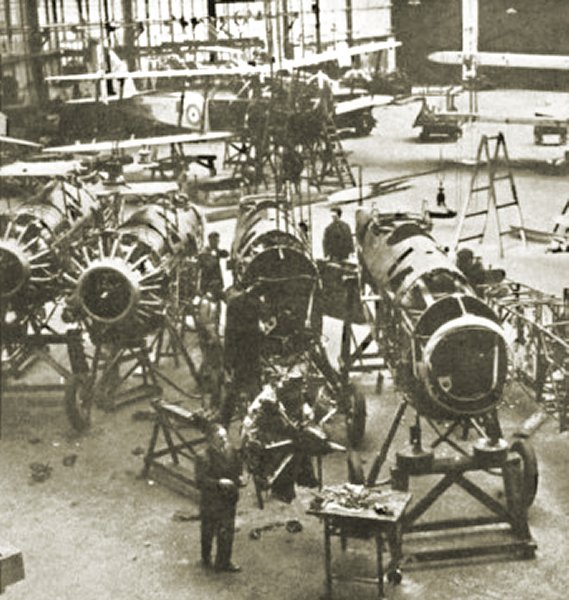
A small section of the works at Yeovil, with Wallace fuselages in various stages of construction.
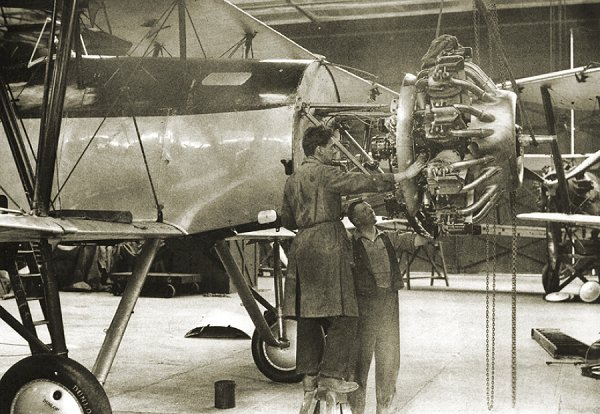
An engine being fitted to a Westland Wallace.
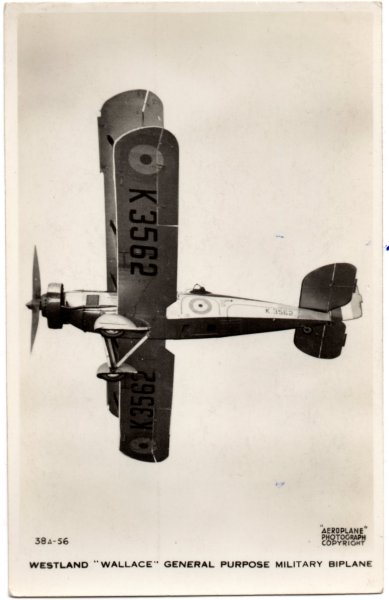
From my
collection
A postcard of the Westland Wallace in flight.
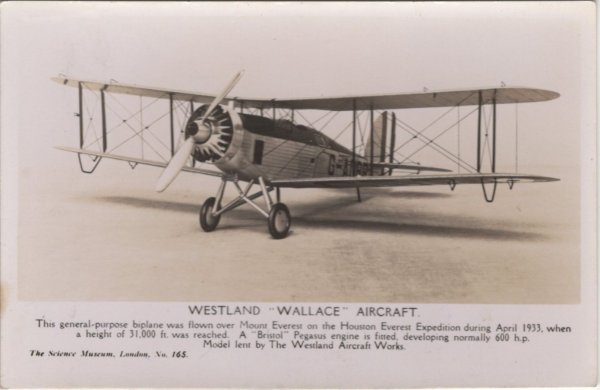
From my
collection
A postcard extolling the flight over Everest by a Westland Wallace in 1933.

The Westland PV-6 after its modifications for the Everest Expedition and Registration as G-ACBR. Often referred to as the Houston-Wallace in honour of Lady Houston who had financed the 1933 expedition.
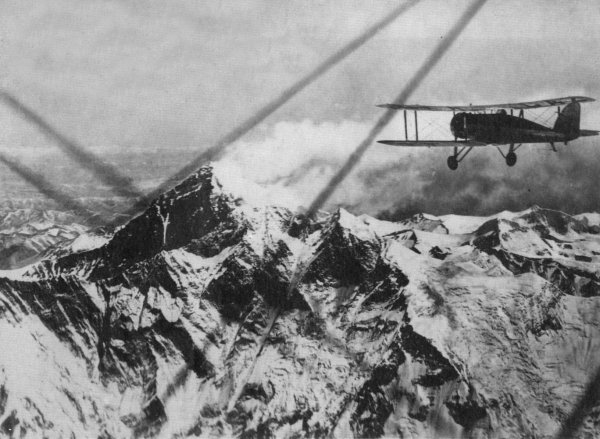
The Westland Wallace approaches Mount Everest on 3 April 1933.
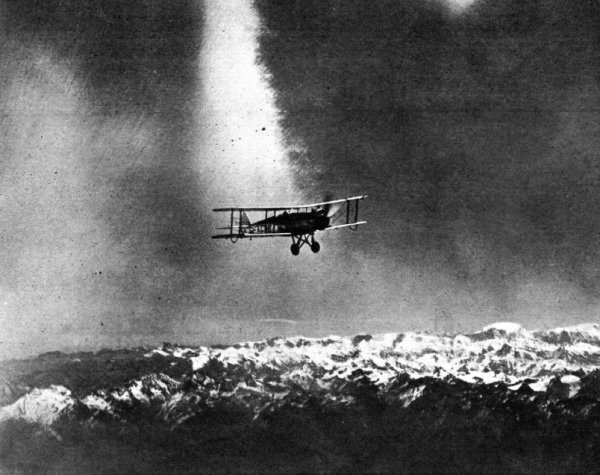
The Westland Wallace over the summit of Mount Everest. 3 April 1933.
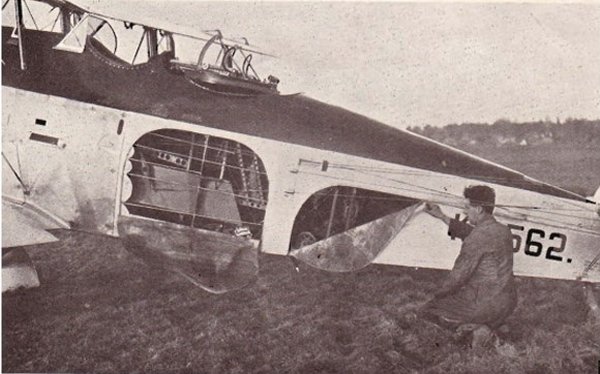
Easy access to the rear of the fuselage was provided by zipped access panels.
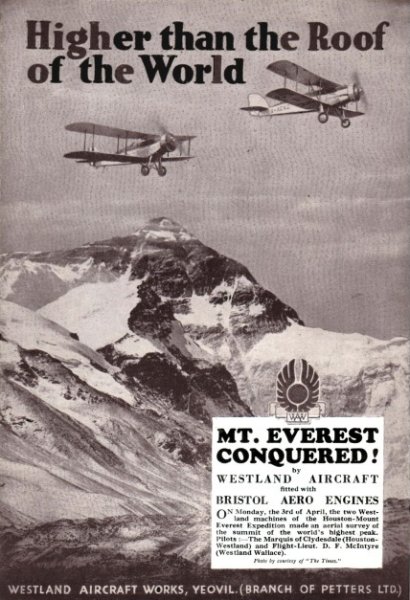
The event of flying over Mount Everest was quickly used for an intensive marketing campaign.
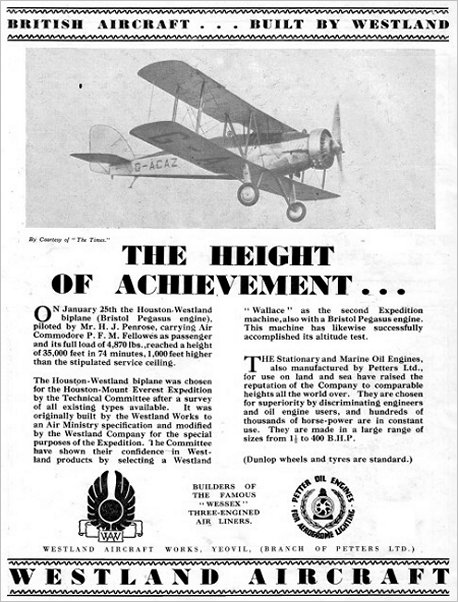
.... and another advertisement.

.... and yet again. I told you it was an intensive campaign!
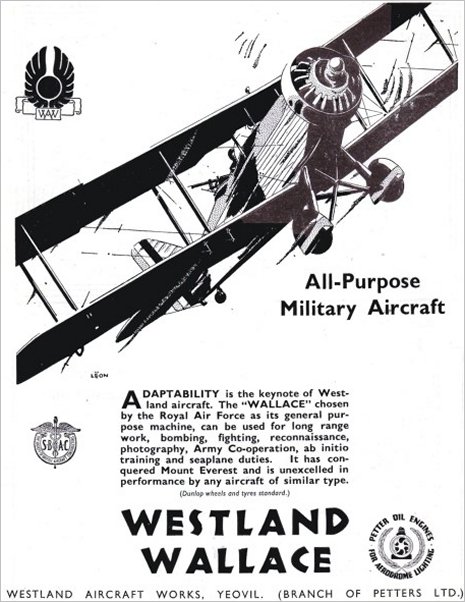
This 1933 advertisement for the Westland Wallace boasts "ADAPTABILITY is the keynote of Westland aircraft. The "WALLACE" chosen by the Royal Air Force as its general purpose machine, can be used for long range work, bombing, fighting, reconnaissance, photography, Army Co-operation, ab initio training and seaplane duties. It has conquered Mount Everest and is unexcelled in performance by any aircraft of similar type. (Dunlop wheels and tyres standard.)
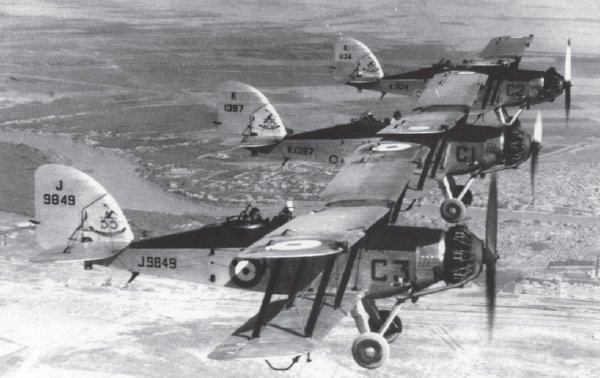
Westland Wallace aeroplanes on active service.